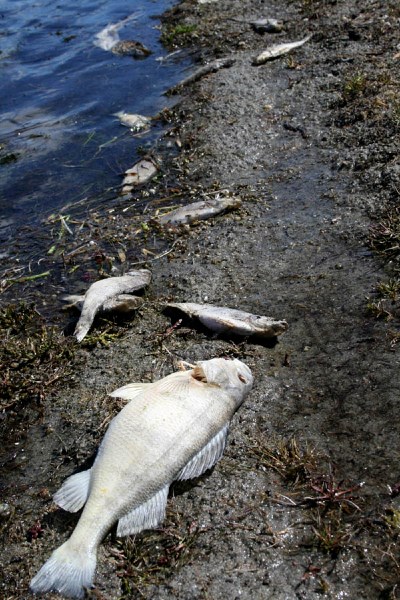Fish and Wildlife officer Duane Fleming confirmed evidence of a partial fish kill at Vincent Lake north of St. Paul on Wednesday.
The Fish and Wildlife officer found dead fish in an advanced state of decay, said Sustainable Resource Development (SRD) spokeswoman Trisha Anderson, in a phone interview.
SDR suspects the long cold winter with heavy snowfall depleted oxygen levels to kill the fish.
Fleming found six dead pike on 100 metres of shore in the southwest corner of the lake where the ice is off about 10 metres from shore. On the southeast side, the officer found six dead perch on 100 metres of shoreline and on the northeast corner, where ice is off the shore about 50 metres, the officer found four perch and two pike.
The east-central and northwest parts of the lake did not have any signs of dead fish or scavenger birds, said Anderson.
Fish and Wildlife will conduct an assessment once the ice is completely off to determine the extent of the kill. The assessment will use fine mesh nettings to gauge the extent, said Jordan Walker, a senior fisheries biologist with SRD.
“Most often it’s actually incomplete. Until you get out there and do the work, it’s hard to say,” said Walker.
The nets will help determine if mature and small fish are still present in the lake, if remaining fish can rebuild on their own, or if the lake requires intervention, Walker said.
Cottage owner Bob O’Driscoll found several dozen dead fish on the south end of the lake at Westcove. O’Driscoll moved to the cottage last year after it was passed down from family. It has been owned by the family for over 60 years.
Vincent Lake is in trouble, he said. He asked whether pumping water from an aquifer could help improve low lake levels, and what is causing the fish to die.
Vincent Lake is 8.15 square km and would need six million cubic metres of water to raise the lake level by one metre, said Karrie Sancartire, spokeswoman with Alberta Environment. “Our current thinking is that there aren’t any aquifers in the area with that amount of water,” she said, which could be used without causing a serious impact on other groundwater in the area.
While pumping water from an aquifer into the lake could be possible, Alberta Environment would conduct a feasibility study before granting an approval. The study would determine how much water would need to be pumped to impact the lake positively, what else would be affected, and whether the aquifer could support the amount, she said.
On small, shallow trout-stocked ponds, kills can be prevented by using an aerator, but aeration is not practical for larger lakes like Vincent Lake because the amount of oxygen that could be put into the lake is too small compared to the amount of oxygen that would be removed through natural processes, said Anderson in an email.
“Winter kill is a natural occurrence that is difficult to both predict and prevent,” she noted. While SDR can assess the probability that a kill may occur, it cannot predict with certainty that a kill will occur on a certain year.
“Most winter kill events are partial and do not result in the extirpation of all species from a lake,” Anderson said, adding that SDR wants to see the fishery rebuild naturally from the fish remaining in the lake after a kill.



